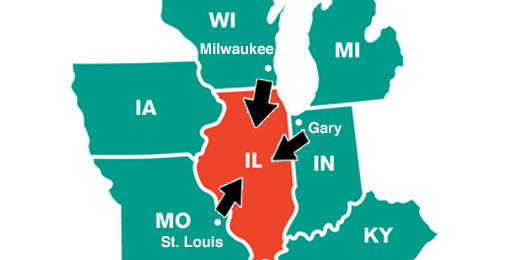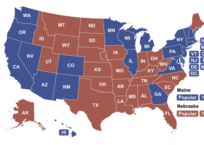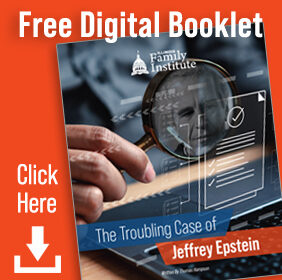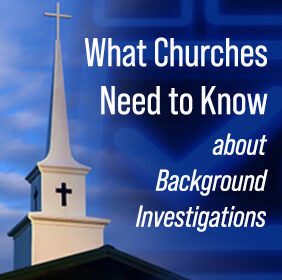
Great Idea! Let’s Help Them
WBEZ reporter Natalie Moore praised Illinois last month for what she saw as a strength. Illinois has become a go-to state for abortion:
Women travel from all over the country to have abortions in Illinois. As neighboring states restrict abortion access, Illinois is seen as a haven that protects access.
The number of “tourist” abortions carried out in Illinois nearly doubled from 2014 to 2018. She credits two groups of people for this development. First, while neighboring states have enacted laws related to such things as parental notification, counseling, waiting periods, or restrictions on public funding, Illinois politicians have been busy making law too. Even if Roe v Wade gets overturned, they have seen to it that Illinois’s abortion centers will remain open for business – with taxpayer funding for customers on Medicaid. Because of moves like these, says Chicago activist Megan Jeyifo, pregnant women pursuing abortion are choosing Illinois “because it’s quicker and less expensive.”
“Looking at Abortion More Expansively”
Moore also credits Illinois activists for having worked to change the narrative about abortion. I read her article carefully. Here is what is meant by “changing the narrative,” based on what she wrote in Abortion Access And Activism Remain Strong In Illinois:
- Abortion should be commonplace. In an earlier era, “keep abortion safe, legal and rare” was the operative slogan. No more. “Rare” must be dropped. Why? Because …
- Words are tools. “Political education means astute communication.” Messaging must serve the cause, and saying abortion should be “rare” doesn’t project the right message. How is the “right” message to be projected?
- Storytelling is a political tactic. Political education also means “storytelling” and “humanizing people.” Here’s what is meant by that. Since nearly 1 in 4 women will at some point have an abortion, everyone knows and loves someone who’s had one. Also, abortion experiences can be difficult. Therefore, stories designed to stir up feelings of love and compassion, especially those involving hardship, should be told.
The campaign to change the narrative, then, reduces to a political strategy by which stories are told to manipulate people into going along with an agenda they would not otherwise go along with. Emotions surrounding the universal values of love, compassion, and goodwill are stirred up and tied to a message that says, if you are loving and compassionate, you will join the “fight” for this cause. This is the very essence of propaganda.
Tack on the all-purpose rhetorical caboose “justice,” and voilà, you have organized a “reproductive justice” train. Moore lauds the fact that the idea of abortion as “reproductive justice” was conceived in Chicago. “The beauty of the reproductive justice framework,” said Toni Bond, one of the framers of the strategy, “is the way that it looks at things much more expansively.”
Looking at Abortion Activists More Expansively
I abhor abortion. I think it’s one of the most egregious human rights violations of our day. But abortion activists aren’t moved by my outrage. Or by yours. In the face of hardened abortioneers (social activists specifically pushing abortion), I think there’s a time and place for drawing them out.
Here are two ways to do that. Both involve looking at abortion – and the abortioneer – more expansively. (Never give an ounce of air to the emotional manipulation. Just call it out, and then proceed.) One approach is to make the case for human life based on facts and logical reasoning. If a conversation is to be had, center it on the nature of abortion. For more on how to make the case for life this way, I highly recommend the work of Scott Klusendorf, president of Life Training Institute (LTI) and author of The Case for Life. Click here or here for more on that.
“Why We Fight”
The other way to proceed is to do what the activists do – tell stories. Except that we tell stories that are true. Here’s a true story:
In 2001, HBO released the ten-part miniseries Band of Brothers. Based on the Stephen Ambrose book of the same name, it followed a group of WWII paratroopers, E Company (“Easy Company”), through basic training, D-Day, occupied France, and finally into Germany.
In Episode 9, “Why We Fight,” the soldiers encounter an altogether different kind of evil. It’s April 1945, the war in Europe is all but over, and they’re stationed in the German town of Landsberg awaiting orders. One day, a few of them venture out to explore the area. They come to the edge of a forest, and before them stands a high barbed wire fence with a locked gate. They venture closer and find behind it hundreds, perhaps thousands of dazed, emaciated and starving prisoners. They have seen fierce battle, but this is a horror on a whole new level, and they are speechless.
After they set about meeting the prisoners’ basic needs – food, water, medical attention – they marched the Landsberg townspeople out to the camp. They made them look, straight on, at the human atrocity that had been taking place in their own backyard, with their complicity. I think it’s safe to say that nobody would want to have been one of the Landsberg townspeople that day.
We can’t drag Illinois abortion defenders out to the POC rooms of Planned Parenthood’s sparkling new complexes in Fairview Heights (near St. Louis) or Flossmoor (near Indiana), or to the spa-like Carafem (near Wisconsin). But one day, all the things that have taken place behind those fences and walls will be exposed.
What we can do now is challenge the activists to look more expansively – straight on, as much as is possible – at exactly what it is that they are championing. Invite them to watch an actual abortion procedure with you. There are plenty online. Maybe even let them have the honor of choosing one to watch. Click here, here, or here for options. Afterward, invite them to explain what they just saw. Perhaps they might further explain how it merits the term “justice.” For the truly hardened, if you can manage to do all this in public, that’s all the better.
You may not change the moral orientation of a given abortioneer, but you can proceed with confidence, knowing that the real justice train only runs one way. In drawing the abortioneer out into the light, you will have invited someone championing evil to look at it from a very uncomfortable place. That’s what tends to happen when the light of truth is shone into the “haven” of darkness.
Subscribe to the IFI YouTube channel
and never miss a video report or special program!






















